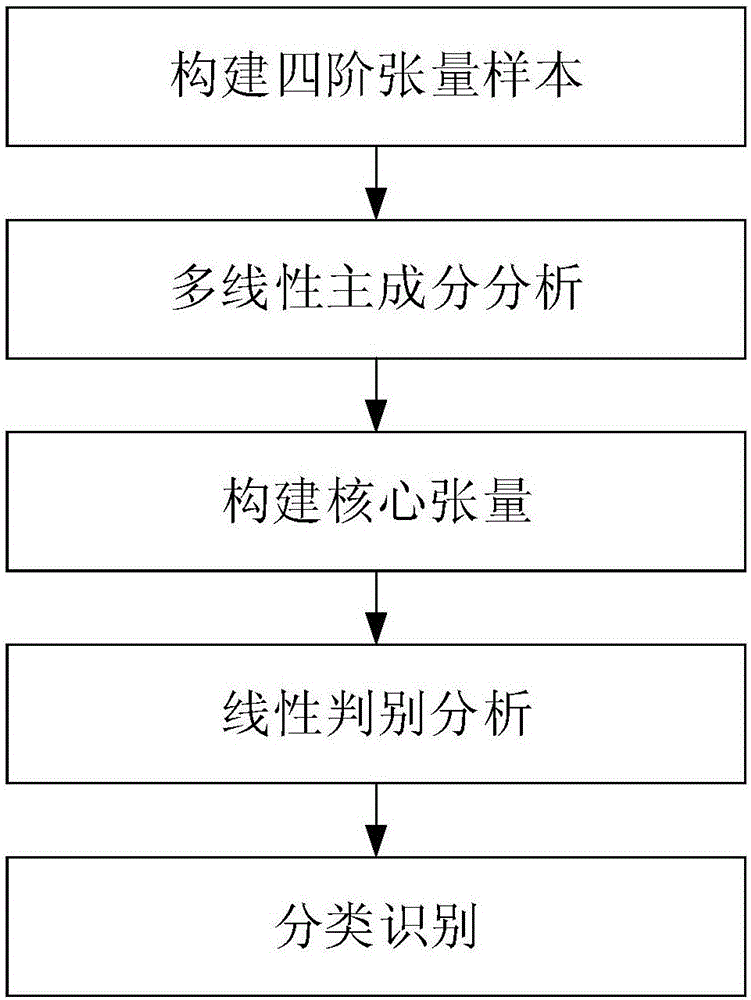SAR (Synthetic Aperture Radar) image target identification method based on multilinear principal component analysis and tensor analysis
A principal component analysis and target recognition technology, applied in character and pattern recognition, instruments, computer parts, etc., can solve the problems of low recognition rate and loss of image structure information, and achieve the goal of retaining structural information and improving the correct recognition rate. Effect
- Summary
- Abstract
- Description
- Claims
- Application Information
AI Technical Summary
Problems solved by technology
Method used
Image
Examples
Embodiment Construction
[0034] The present invention will be further described below in conjunction with drawings and embodiments.
[0035] refer to figure 1 and figure 2 , a SAR image target recognition method based on multi-linear principal component analysis and tensor analysis, using the public synthetic aperture radar image MSTAR database, selecting seven types of targets as training and testing sample sets, the seven types of targets are : BTR70_c71, D7, ZSU_23 / 4, BRDM_2, T72_132, BTR_60 and 2S1, the training and testing samples are shown in Table 1.
[0036]
[0037]
[0038] Table 1
[0039] refer to figure 1 , a synthetic aperture radar image target recognition method based on multi-linear principal component analysis and tensor analysis, including 5 steps, specifically:
[0040] (1) Construct a fourth-order tensor training sample
[0041] First, the original SAR image is preprocessed, and the image is uniformly adjusted to a magnitude image P with a size of 128*128 pixels, and t...
PUM
 Login to View More
Login to View More Abstract
Description
Claims
Application Information
 Login to View More
Login to View More - R&D
- Intellectual Property
- Life Sciences
- Materials
- Tech Scout
- Unparalleled Data Quality
- Higher Quality Content
- 60% Fewer Hallucinations
Browse by: Latest US Patents, China's latest patents, Technical Efficacy Thesaurus, Application Domain, Technology Topic, Popular Technical Reports.
© 2025 PatSnap. All rights reserved.Legal|Privacy policy|Modern Slavery Act Transparency Statement|Sitemap|About US| Contact US: help@patsnap.com



